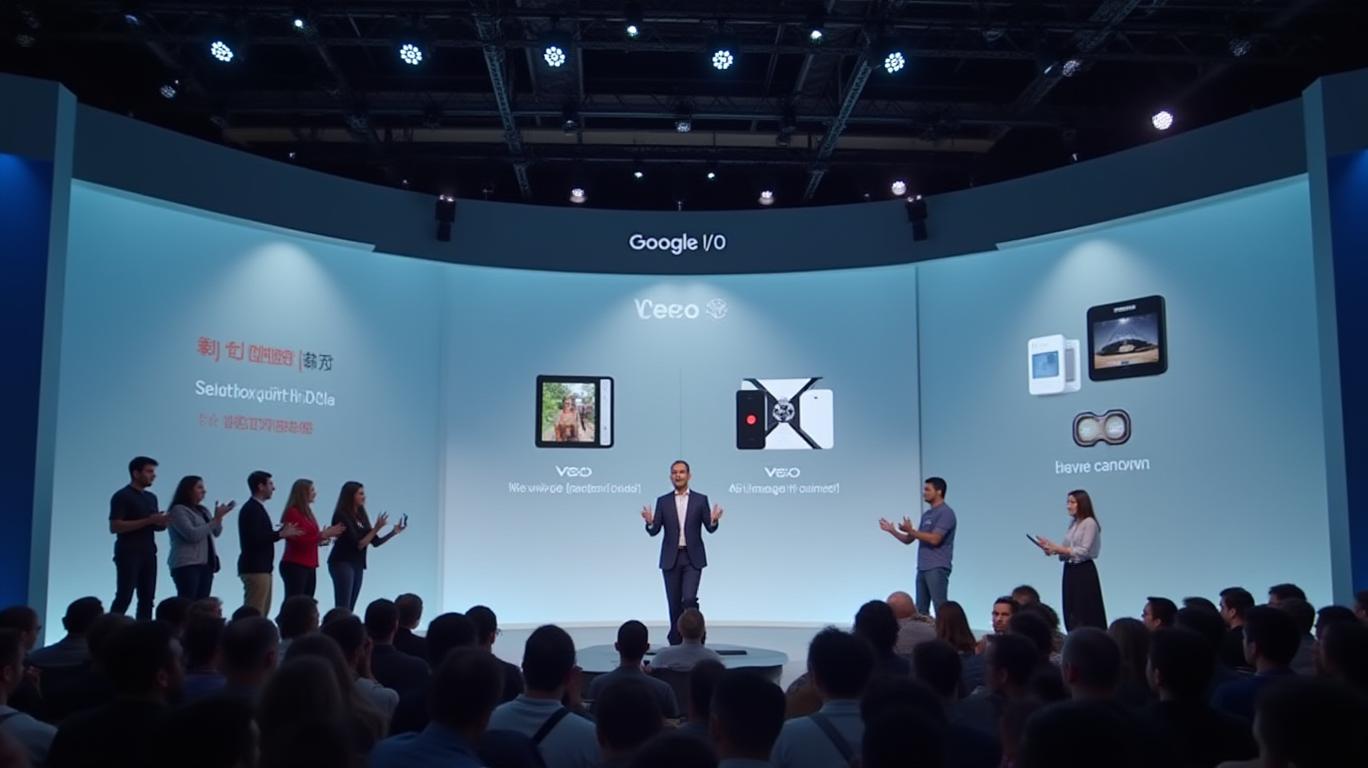Google Unveils Veo 3, Imagen 4 at I/O Event, Boosts AI Capabilities
Google has made significant strides in the field of generative AI, unveiling a suite of advanced tools at its annual I/O event. The company introduced Veo 3, an AI video generator capable of producing complete soundtracks, including ambient noise, effects, and dialogue, synchronized with the footage. This marks a significant advancement in video generation technology, as Veo 3 can create various styles beyond simple 2D cartoon animations, positioning it as a direct competitor to current leaders in the field.
Alongside Veo 3,
launched Imagen 4, the latest iteration of its image generator model. Imagen 4 boasts enhanced photorealism, 2K resolution, and improved text rendering, making it a significant improvement over previous models. This tool is designed to generate high-quality images with accurate text, which is particularly useful for signage, products, and digital mockups.These tools are integrated into Flow AI, a new subscription feature for professional users. Flow AI combines Veo, Imagen, and Gemini's language capabilities into a unified filmmaking and scene-editing environment. However, this integration comes at a cost, with a promotional price of $125 per month, which will increase to $250 after the promotional period.
Gemini, Google's next-gen model family, now powers everything from search results to video synthesis and high-resolution image creation. Gemini 2.5 forms the backbone of the company's redesigned search engine, evolving it from a link aggregator into a dynamic, conversational interface that handles complex queries and delivers synthesized, multi-source answers. AI overviews, where Google Gemini attempts to provide comprehensive answers to queries without requiring users to click through to other sites, now sit at the top of search pages.
Another notable development is Gemini Diffusion, which applies diffusion technology to text generation. This technology starts with random information and refines the output with each iteration, producing thousands of tokens per second while maintaining accuracy. This approach is a departure from the traditional autoregressive models, which generate each new token after reading all previous generations to determine the best next token.
Google's new AI tools have been met with mixed results, depending on the tier. Deep Research, a comprehensive research agent, has shown particular promise, even outperforming ChatGPT’s alternative. It evaluates hundreds of sources and delivers reliable information with minimal errors, and can generate infographics to condense information into visually appealing slides.
Veo 3 remains exclusive to Gemini Ultra users, though some third-party providers already offer access via API. Flow AI, which is built on Veo's models, allows users to edit, cut, extend, and modify AI scenes using simple text prompts. Veo 2, the predecessor to Veo 3, has also seen improvements, with faster generations and the ability to understand prompts and generate coherent text.
Imagen 4 prioritizes realism unless specified otherwise, with better prompt adherence and visuals that surpass its predecessor. The model can generate images with different elements that don’t usually fit together in the same scene, demonstrating its versatility and accuracy.
Google's monetization strategy is clear, with a tiered approach to its AI tools. The "Ultra" plan costs $250 monthly, bundling priority access to the most powerful models, Flow AI tools, and 30 terabytes of storage. The "AI Pro" tier, priced at $20, unlocks Google's previous Veo 2 model, along with image and productivity features. Basic generative tools remain free, but with limitations like a token cap and only 10 researches per month.
This tiered approach mirrors the broader AI market trend, driving mass adoption with freebies and then locking in professionals with features too useful to pass up. Google’s bet is that the real action (and margin) is in high-end creative work and automated enterprise workflows, not just casual prompts and meme generation.


Comments
No comments yet